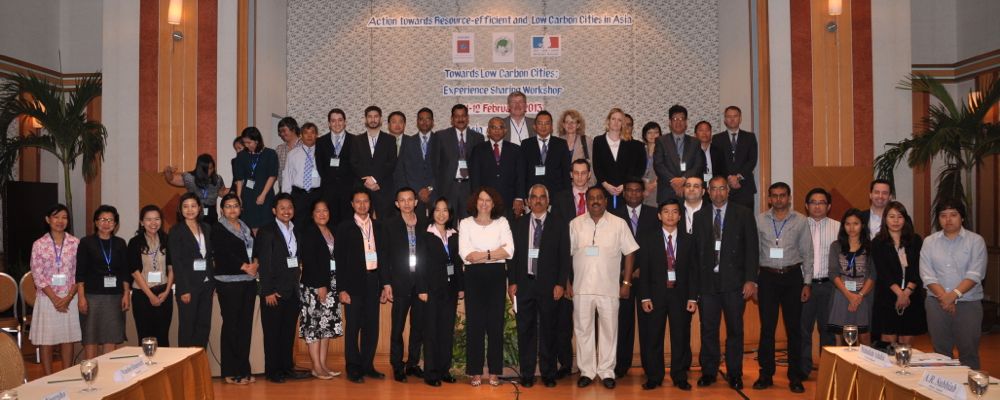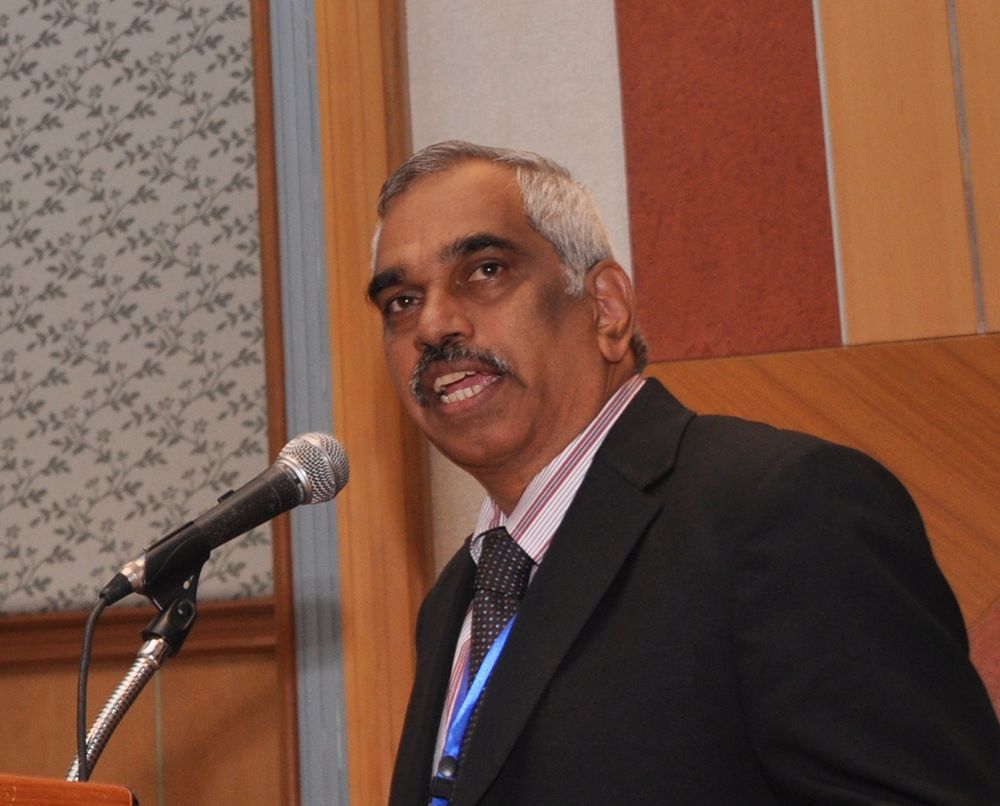,
By Shawn Kelly / AIT
(Bangkok) In the age of climate change, big cities contribute mightily
to greenhouse gas emissions. And though Asia is home to many of the
world’s most populated mega cities, around the region small and
medium-sized cities are pushing forward with strategies for achieving
low-carbon management and development, aided by scientists at the Asian
Institute of Technology (AIT).
Call it a club, of sorts: one guided by scientific principles, whose
membership believe in slowing the pace of global warming and finding
mitigation and adaptation solutions for their citizens. AIT’s regional
effort to build a “low-carbon society” through a project
called Action towards
Resource-efficient and Low Carbon Cities in Asia is
focused on fast-growing cities of half-a-million or less.
The two-year project spans Lao PDR, Vietnam, Sri Lanka, and Thailand,
partnering with the cities of Luang Prabang, Hue, Danang, Chau Doc,
Kurunegala, Matale, Kandy, Chiang Mai, Rayong, and Nonthaburi. All have
vowed to introduce improved resource efficiencies and low-carbon
frameworks inside their boundaries. The initiative is funded by
French
Environment and Energy Management Agency (ADEME),
SDCC/AIT-France and the participating cities.
“Asia is the center of global growth in the 21st century, and the
small and medium-sized cities will be the large cities of tomorrow,”
said Low Carbon Cities (LCC) project leader Prof. S. Kumar of AIT,
explaining that smaller urban centres can still avoid the unsustainable
growth patterns and planning mistakes characteristic of larger Asian
metropolises.
Overall, the project involved capacity building of municipal
authorities and their partners in greenhouse gas emissions estimation
and the development of city-level climate and energy plans, as well as
estimation of emissions at city level, and small pilot activities for
mitigation of emissions, Prof. Kumar said.
Each city conducted a greenhouse gas inventory of assets and services
for the first time, using methodologies developed by
ADEME such as the Bilan Carbone TM tool. It “opened the eyes” of
senior municipal administrators to low carbon planning options, cities’
representatives told a project Experiences Sharing Workshop in Bangkok
on February 11-12, 2013.
Dr. Amararatne Yakupitiyage, Acting Dean, AIT School
of Environment, Resources and Development, welcomed the
participants on behalf of AIT. Prof. Chettiyappan Visvanathan,
Principal Investigator, LCC, EEMP-SERD, AIT, said the two-day
event provided opportunities for municipal governments, academic
organizations, international organizations, public and private
enterprises and project partner cities to join hands for planning and
networking for new initiatives in the future, and to share their
results.
Workshop sessions included Action Plans by Cities to Address Climate
Change; Sharing Experiences from Asia; Opportunities for Funding; The
Way forward; and Towards Low Carbon Society.
One spin off project is "Sustainable urban tourism through low carbon
initiatives: Experiences from Hue and Chiang Mai" sponsored by
Sustainable Mekong Research Network (SUMERNET: http://www.sumernet.org/
).
THINKING REGIONALLY
Dr. Dominique Campana, Director of International Affairs, ADEME, who
opened the conference, believes international cooperation is essential
to extending the low-carbon movement across the region, so partnering
with AIT to connect with public and private sector partners in Thailand
and the rest of Asia is a natural fit.
Indeed, by “thinking regionally” the project is “moving towards
creating a low carbon society in Asia with new normative frameworks,
standards and growth strategies for green urban growth,” said Donovan
Storey, chief, Sustainable Urban Development Section, United Nations
Economic and Social Commission for Asia and the Pacific, Bangkok.
Dr. P. Abdul Salam, leader, Green Growth Thematic Area, AIT, added:
“This is really a strong attempt to bring the smaller municipalities
into the forefront of this critical issue of green growth and low
carbon urban planning.”
Mr. Storey said that while the Asia-Pacific region is home to numerous
mega-cities half of the urban population actually lives in cities of
less than one-half million. Across the region, the growing urban carbon
footprint is happening in the small and medium-sized towns, he
confirmed.
According to UNESCAP, globally, cities account for 67% of all energy
use and emit 71% of all greenhouse gases. Meanwhile, half a billion
people will move to cities in the next decade, and the challenges will
be enormous. “These smaller cities are not ‘sexy’ so to speak, but they
are where future growth is happening and where there are opportunities
for alternative development patterns,” Mr. Storey said.
CALCULATING CARBON FOOTPRINTS
With a population of 260,000, suburban Nonthaburi on Bangkok’s
northern flank has focused on activities to mitigate GHG emissions by
reducing energy consumption at city buildings and creating awareness
about low carbon initiatives, Mr. Permpong Pumwiset, the municipality’s
chief of environment and public health, said.
A greenhouse gas audit indicated that administrative buildings,
schools, sewage pumping stations and health clinics consumed the most
electricity, thereby emitting the highest levels of GHGs. After
replacing 200 sets of fluorescent lamps with LED, the municipality
reduced carbon emissions by 41 tons per year, saving 67,737 kilowatts
of energy and 240,000 Baht in electricity charges.
“We are now talking with factories and department stores in the
municipality to encourage reduced energy consumption through heightened
awareness and improved infrastructure, such as changing to more
efficient air conditioning,” Mr. Permpong added.
Simple car-pooling and public bicycle-riding are also ideas being
explored by the city, as is cooperating with local communities and
public schools to promote recycling and composting of organic matter.
Bangkok’s neighbor will be emphasizing energy conservation and public
awareness campaigns, he said.
Mr. Sengkeo Kangnasone, an engineer with the Luang Prabang Urban
Development Administration Authority, said the project was instrumental
in reducing levels of bio-organic wastes generated by restaurants,
hotels and households in the northern Lao PDR town. The next step
will be increase the geographical coverage to include 6-7 more
districts in the inner city, he believes.
In Sri Lanka, officials from Kandy, Matale, and Kurenegala all
expressed enthusiasm for the initiative, based on positive initial
results. “This project has given us the opportunity to assess the
carbon emissions within the municipal boundary and helped us to
prioritize actions and measures to achieve our quest to become a
low-carbon city in Asia,” said Mr. Anuradha Gamini Peramunage, Mayor,
Kurenegala, Sri Lanka.
“Before this study we could not calculate GHGs,” echoed Mr. Mr. Nguyen
Tien Hoang, Lecturer/Assistant Dean, Hue University of Sciences,
Vietnam. “Now we know most of Hue's emissions are from motorbikes
so hopefully this data can help our planners to develop a bus system
running on ethanol.”
LOW-CARBON WAY FORWARD
AIT energy expert Dr. Brahmanand Mohanty is unequivocal that green
growth must involve long term urban transformation above and beyond GHG
reduction pilot programs that sensitize people to climate change
issues.
“Successful cities will be those that achieve total low-carbon
transformation, and these are the places that are likely to be livable,
efficient, competitive and sustainable,” he said.
The AIT visiting faculty and Regional Adviser for Asia-ADEME
suggested thinking far beyond climate change adaptation and mitigation
strategies, calling on Asia’s mayors to consider where they want their
city to be positioned 40-50 years from today.
The challenge will be to manage a city on a low carbon trajectory that
maximizes low-carbon energy sources, enhances efficiency in delivering
urban services, and moves to low-carbon intensity for a given unit of
economic output. True urban sustainability needs to be supported by the
‘three-P’ pillars or people, planet and profit,” he said, which will
lead to clean, smart, sustainable, inclusive and resilient
cities.
Other climate change analysts agreed. A “quantum leap forward” in
thinking is needed to achieve low- carbon cities, and this will involve
completely reconsidering how cities are designed, how they move people,
how they operate buildings, how they produce, transport and consume,
and the way they manage water and solid wastes, Mr. Storey stressed.
Ultimately, achieving a low-carbon society for Thailand and Asia’s low
and medium-sized cities will mean “breaking the nexus of economic
growth being linked to increased carbon emissions,” he said.
Cities are the future engines of growth for all of humanity, and
Thailand’s cities cannot compromise on economic advancement, advised
Dr. Mohanty. A real solution will be found when they achieve increased
GDP growth without increasing GHG emissions.
With plenty of work ahead, the ten cities have gained unique insight
about resource depletion and greenhouse gas emission issues. Careful
consideration was also given to engaging citizenry, including the poor
and women, as low-carbon activities were promoted. The cities are now
moving forward to formulate low-carbon policies, strategies and
initiatives that favor equitable and socially fair growth, and
sustainable production and consumption practices, Prof. Kumar said.
Indeed, in a written message to the conference, Nonthaburi, Thailand,
Mayor Somnuk Thanadechakul sounded an optimistic note in summing up the
future challenge: “This project is a small step towards [achieving a]
low carbon city and we will keep going to make our city suitable for
sustainable living.”
Other participating expert speakers included: Mr. A. R. Subbiah
Director, Regional Integrated Multi-Hazard Early Warning System for
Africa and Asia (RIMES); Mr. Fouzi Benkhelifa, Associate Director,
EXPLICIT; Mr. Donovan Storey, Sustainable Urban Development Section /
Environment and Development Division, UN-ESCAP; Ms. Mahallah Adalia,
Projects and Operations Coordinator for Southeast Asia, ICLEI; Mr. Agus
Nugroho, Program Coordinator, Stockholm Environment Institute
(SEI)-Asia; Mr. Tomoyuki Kawabata Senior Representative, JICA; Mr.
Sergi Bosque Garcia, Consultant / Representative for Asia and the
Pacific, Factor CO2; Ms. Naeeda Crishna-Morgado, Carbon Footprint
Specialist, GMS/ADB; Ms. Sutthiya Chantawarangul, Programme Officer;
Delegation of the European Commission to Thailand; Dr. Brahmanand
Mohanty, Visiting Faculty AIT / Regional Adviser for Asia –
ADEME.
Faculty of AIT School of Environment, Resources and Development
involved in LCC who organized and facilitated sessions at
the workshop included: Prof. Sivanappan Kumar, Principal
Investigator, Green Growth Thematic Area-SERD, AIT; Prof. Chettiyappan
Visvanathan, Principal Investigator, LCC, EEMP-SERD, AIT; Dr. P . Abdul
Salam, Leader, Green Growth Thematic Area-SERD, AIT; Dr. Charles
Marpaung, Principal Investigator, Green Growth Thematic Area-SERD, AIT;
Dr. Kyoko Kusakabe, Principal Investigator, Green Growth Thematic
Area-SERD, AIT.
Mr. Olivier Drean, Secretary-General of the Steering Committee,
SDCC-AIT/France Network, chaired the session on Sharing Experiences
from Asia.
Mr. Pravakar Pradhan, Researcher, SERD, AIT, and Ms. Pujan Shrestha,
Researcher, SERD, AIT, organized the workshop.


